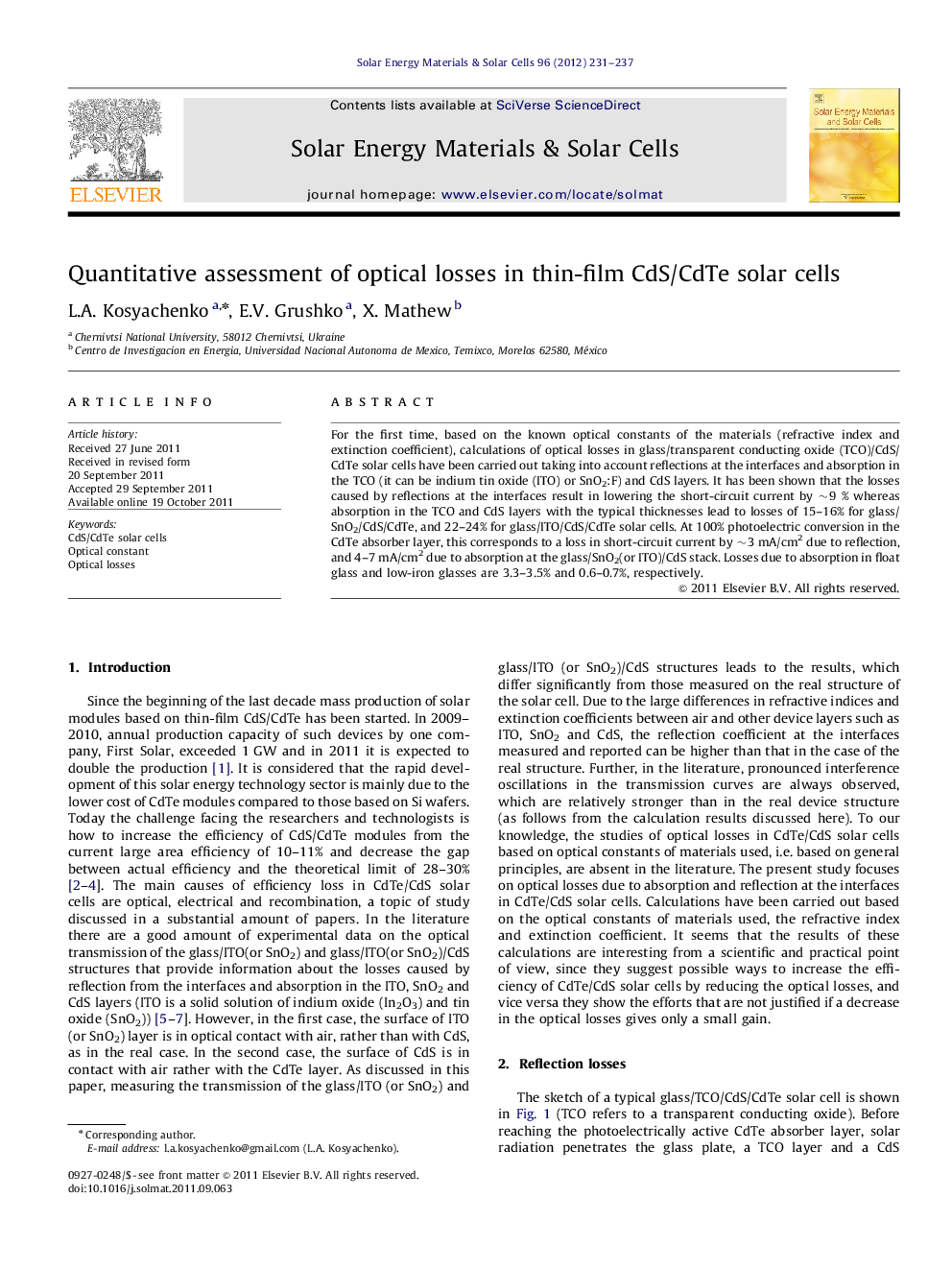| Article ID | Journal | Published Year | Pages | File Type |
|---|---|---|---|---|
| 79491 | Solar Energy Materials and Solar Cells | 2012 | 7 Pages |
For the first time, based on the known optical constants of the materials (refractive index and extinction coefficient), calculations of optical losses in glass/transparent conducting oxide (TCO)/CdS/CdTe solar cells have been carried out taking into account reflections at the interfaces and absorption in the TCO (it can be indium tin oxide (ITO) or SnO2:F) and CdS layers. It has been shown that the losses caused by reflections at the interfaces result in lowering the short-circuit current by ∼9 % whereas absorption in the TCO and CdS layers with the typical thicknesses lead to losses of 15–16% for glass/SnO2/CdS/CdTe, and 22–24% for glass/ITO/CdS/CdTe solar cells. At 100% photoelectric conversion in the CdTe absorber layer, this corresponds to a loss in short-circuit current by ∼3 mA/cm2 due to reflection, and 4–7 mA/cm2 due to absorption at the glass/SnO2(or ITO)/CdS stack. Losses due to absorption in float glass and low-iron glasses are 3.3–3.5% and 0.6–0.7%, respectively.
Graphical AbstractFigure optionsDownload full-size imageDownload as PowerPoint slideHighlights► Calculations of optical losses in CdS/CdTe solar cells have been carried out. ► Calculations reveal the causes of the optical losses and the possibilities to reduce them. ► Reflection losses is about 8% over a wide spectral range and increase to 10–11% at λ<400 nm. ► Absorption decreases the short-circuit current by 12–26% in ITO and 2-5% in SnO2:F at 200–500 nm thickness. ► Absorption losses in CdS at its thickness of 50–100 nm decrease the short-circuit current by 10–15%.
